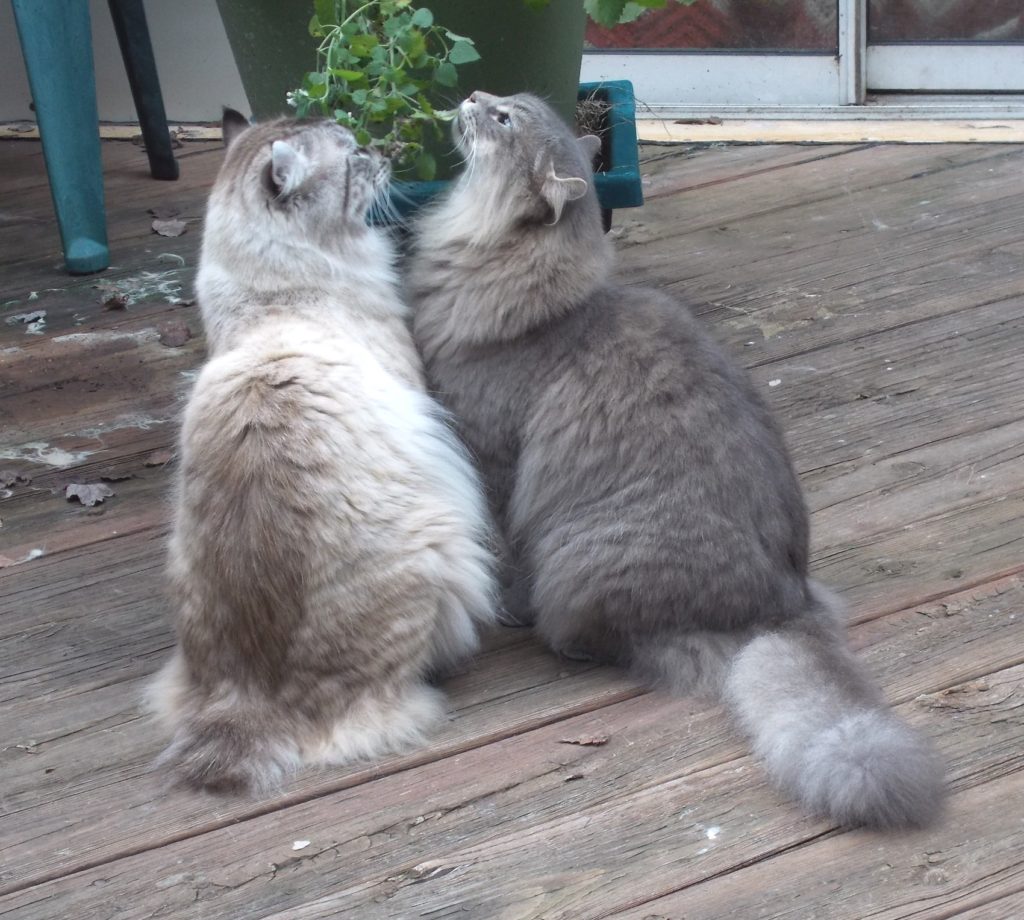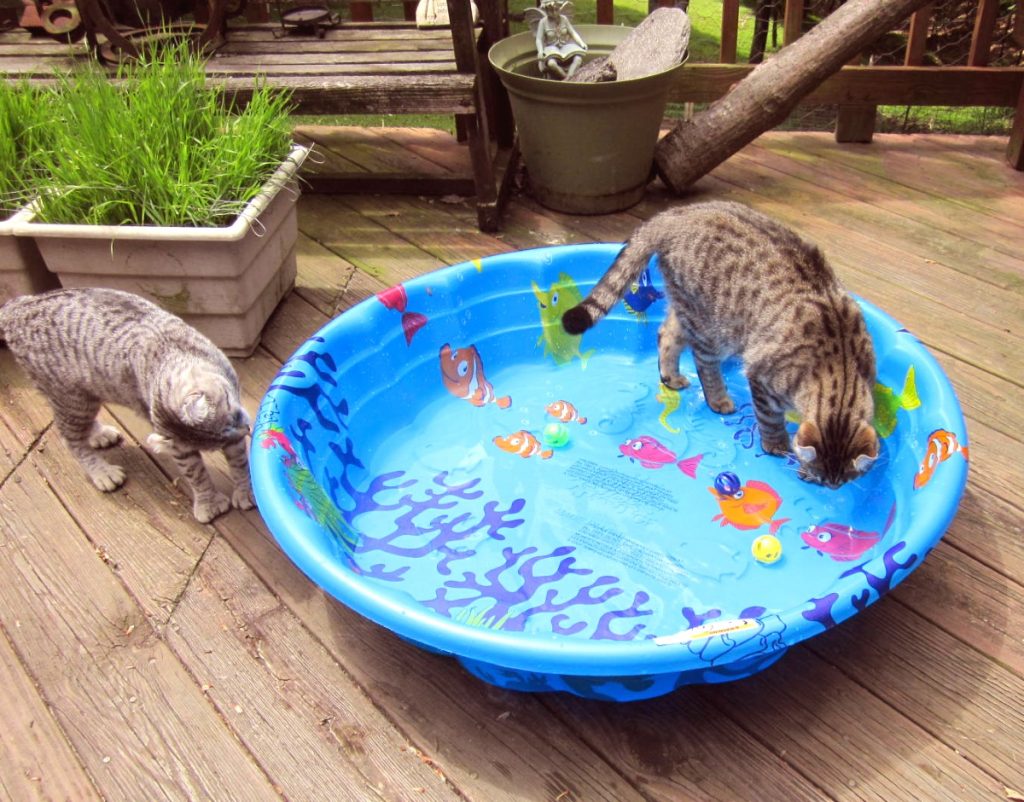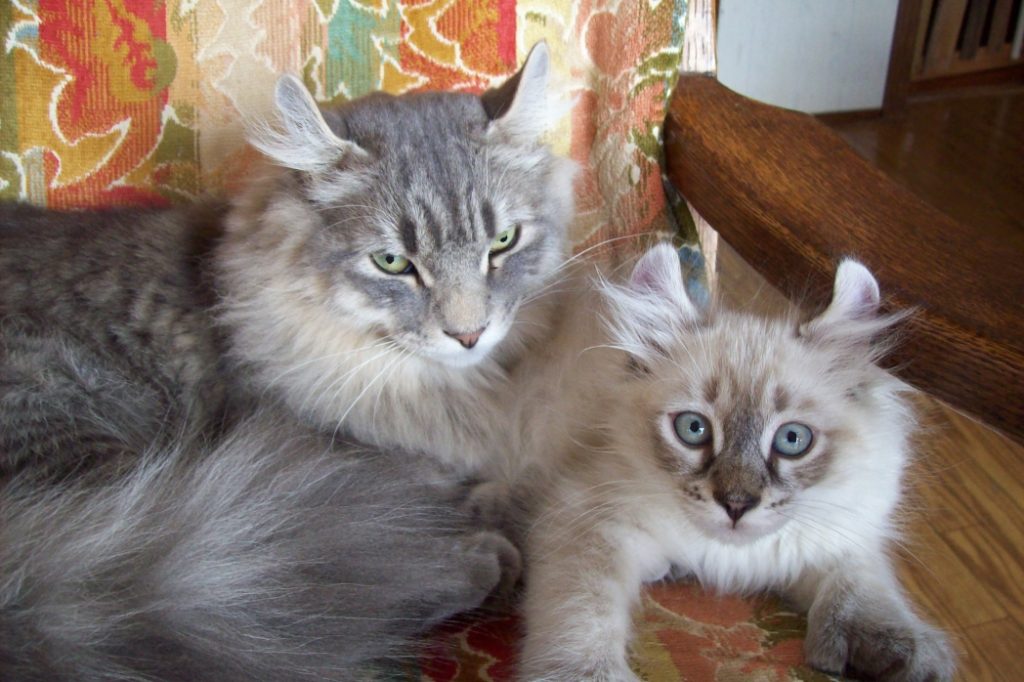Part One:
Many folks have questions about the difference between a Highland Lynx cat, the Highlander and an ordinary domestic cat. Here is some Highland Lynx information that may help to answer those sorts of questions.
To define and explain their differences I would begin with their history and origin. In 1995 the first Highland Lynx kittens were born at Timberline Cattery in N.C., a result of a cross between Desert Lynx cats and Jungle Curl Cats. Desert Lynx cats are believed by some to have originally have been hybrids of domestic cat breeds (such as Maine Coon or American Bobtail) and a wild bobcat, (though according to science this does not appear to be possible). The Jungle Curl cats are a hybrid mix of domestic curled ear cats (such as the Hemingway Curl or possibly the American Curl) with the African Jungle cat (Found in Egypt, Asia, India, etc).
The Highlander Cat was originally the same cat as the Highland Lynx, but is now a separate breed. The Highlander is also of domestic origins, mainly breeds such as the Desert Lynx and Highland Lynx. The goal was to produce a domestic cat with the look of a big cat and to seek competition/show status in registries such as TICA (The International Cat Association).

Part Two:
Highland Lynx cats are among the most intelligent of the feline breeds. I have seen repeated evidence of how trainable they tend to be, whereas with some cats I have owned it was much more difficult to make behavior changes, especially once they were adults.
To share an example – we installed a cat door that leads out to a screened in deck. Our rescue cats don’t care for the pet door and will wait for us to open the big door for them. It took serious effort to get them to use the cat door. Our Highland Lynx, both cats and kittens learn to go in and out at will within a week and with no training from us as all .
Some Highland Lynx are cautious at first, but usually friendly even to people they do not know (this quality has to do with both genetics as well as socialization in the breeders home). To their family they are abundantly loving and affectionate and often listen for the sound of your vehicle or voice and meet you at the door. *These cats form strong bonds with their families and should be considered as a life-long commitment! Change of ownership later in life is stressful for any animal!
They are also very playful and have good energy, bringing great entertainment with their wild spurts of racing around the house, chasing each other and playing with their toys. One of our Lynx girls even “taught us” to play fetch with her favorite spring toys! We also ended up buying a baby pool for a couple of them to enjoy in the summertime…..otherwise their water bowl ends up being slung all over the kitchen. 🙂
When healthy, these cats are serious hunters and love to find a bug or a lizard on the porch. Beware if birds or mice have access to their screened in areas….as you will find dead creatures.

Part Three:
In our experience the Highland Lynx is one of the most well-balanced breeds of cat. They nearly always get along well with other pets, children and so forth if given proper time and methods of introduction.
These cats have been carefully bred to promote the most loving of temperaments. However they will not sit around your house all day looking cute. They are active and love play time, climbing cat trees as well as some cuddle time. They can be quiet or talkative depending on the cat. When they do talk to you, be sure there is something important on their mind.
The Highland Lynx (and Highlander) has the appearance and size of a more exotic wild-cat in a smaller, sweeter package. They are a larger than average, muscular cat with long hind legs. The average house cat weighs somewhere between 6 and 10 lbs. An average bobcat in the wild is generally 15 to 35 lbs. Highland Lynx cats are not fully mature until around 3 years old, but when they reach their full size the males often weigh 12-19 lbs. and females may be 8-14 lbs.
They come in a huge variety of beautiful colors and coat patterns, such as blue, black smoke, bronze, chocolate, red, silver, sepia, mink, snow and more. The coat patterns underlying these gorgeous colors can be clouded leopard (classic/marbled), tawny (ticked markings), and spotted leopard. There are also solid markings and the more classic tabby looks.
One of the more fabulous qualities of Highland Lynx cats is their incredible variety! I have a friend who raises Golden Retrievers, a lovely, sweet breed of dog. But they all look like darling little clones. Highland Lynx kittens are as varied and individual as the imagination is wide!
The Highlander and Highland Lynx can have long hair, short hair or medium hair. Their ears can be tightly curled, just curled on the tip or not curled at all. (Often the ears and toes are tufted.) They can have the normal number of toes (5 front, 4 back) or they can have 6, 7, or even 8 toes in any combination on the front and back, making them polydactyl (more than the normal # of toes).
Their tails can be short, medium or long in length, kinked or even absent altogether (called rumpy). Eye color can be lion gold, emerald green (or the golden green of the wild cats) and in snows, a bright, deep blue. And you have already read the list of stunning colors they can have and the range of sizes they come in. There is just no cat on earth like the marvelous Highland Lynx! If you need help finding an excellent Highland Lynx Breeder near you, please Contact Us for a referral!

